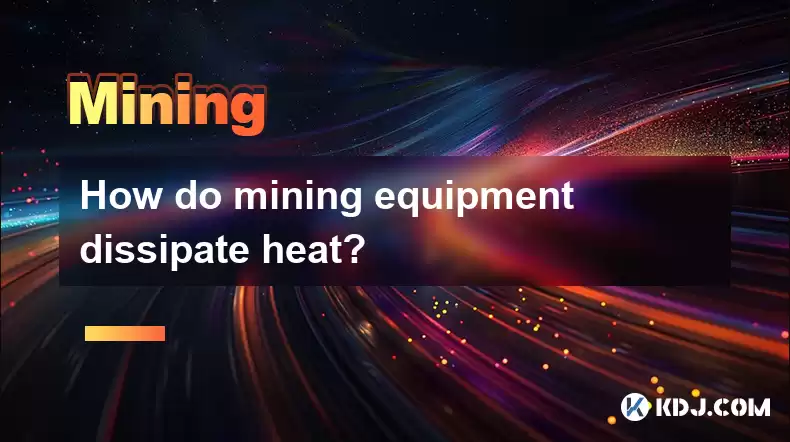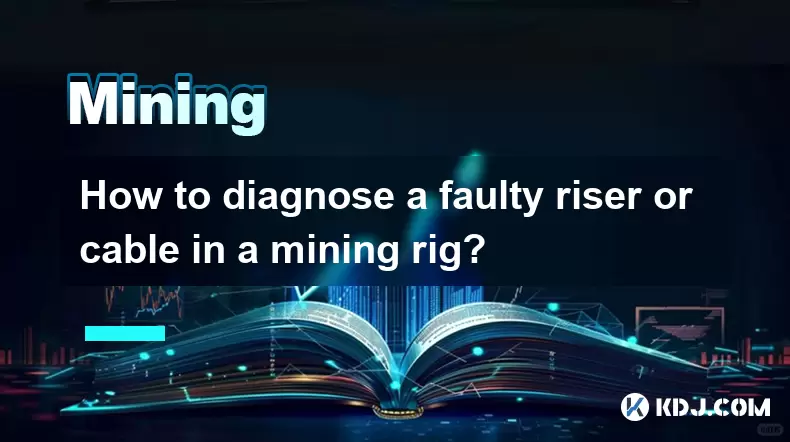-
 Bitcoin
Bitcoin $116800
1.37% -
 Ethereum
Ethereum $3832
5.15% -
 XRP
XRP $3.063
2.69% -
 Tether USDt
Tether USDt $1.000
0.04% -
 BNB
BNB $774.1
0.84% -
 Solana
Solana $170.7
1.56% -
 USDC
USDC $0.0000
0.01% -
 Dogecoin
Dogecoin $0.2142
5.31% -
 TRON
TRON $0.3406
1.90% -
 Cardano
Cardano $0.7635
3.81% -
 Hyperliquid
Hyperliquid $39.55
2.42% -
 Sui
Sui $3.732
7.71% -
 Stellar
Stellar $0.4127
4.25% -
 Chainlink
Chainlink $17.80
6.91% -
 Bitcoin Cash
Bitcoin Cash $576.7
1.66% -
 Hedera
Hedera $0.2521
3.28% -
 Ethena USDe
Ethena USDe $1.001
0.01% -
 Avalanche
Avalanche $22.66
2.19% -
 Litecoin
Litecoin $121.3
2.98% -
 UNUS SED LEO
UNUS SED LEO $8.959
-0.31% -
 Toncoin
Toncoin $3.325
2.88% -
 Shiba Inu
Shiba Inu $0.00001263
2.84% -
 Uniswap
Uniswap $10.11
4.79% -
 Polkadot
Polkadot $3.769
3.22% -
 Dai
Dai $1.000
0.01% -
 Bitget Token
Bitget Token $4.413
1.46% -
 Monero
Monero $272.9
-4.98% -
 Cronos
Cronos $0.1488
4.22% -
 Pepe
Pepe $0.00001088
4.01% -
 Aave
Aave $273.0
4.73%
How do mining equipment dissipate heat?
Cryptocurrency mining generates substantial heat, demanding effective cooling. Methods range from simple air cooling for smaller operations to sophisticated liquid cooling for larger, high-power ASICs, requiring regular maintenance for optimal performance and longevity.
Mar 21, 2025 at 06:00 pm

Key Points:
- Mining equipment generates significant heat due to the intensive computational processes involved.
- Effective heat dissipation is crucial for maintaining equipment performance and longevity.
- Various methods are employed, ranging from simple air cooling to sophisticated liquid cooling systems.
- Choosing the right cooling solution depends on the scale of the operation and the specific hardware used.
- Proper maintenance and monitoring of cooling systems are essential for optimal operation.
How Do Mining Equipment Dissipate Heat?
Cryptocurrency mining, particularly with Proof-of-Work (PoW) algorithms, involves immense computational power. This translates to significant heat generation from the ASICs (Application-Specific Integrated Circuits) and other components within the mining rigs. Failure to effectively dissipate this heat can lead to hardware damage, reduced performance, and ultimately, lost profits. Therefore, understanding and implementing effective cooling strategies is paramount for successful mining operations.
The most basic method of heat dissipation is air cooling. This involves using fans to circulate air around the mining hardware. These fans draw in cool air and expel the heated air, preventing the components from overheating. This approach is often sufficient for smaller-scale mining operations or when using less powerful ASICs. However, it becomes less effective as the number of ASICs and their power consumption increase.
For larger operations or high-performance ASICs, more advanced cooling solutions are necessary. These often involve the use of heat sinks. These are passive cooling devices that increase the surface area of the ASICs, allowing for more efficient heat transfer to the surrounding air. Heat sinks are frequently used in conjunction with fans for improved cooling performance.
Beyond air cooling, liquid cooling offers a significant advantage. This method utilizes a liquid coolant, typically water or a specialized dielectric fluid, to absorb heat from the ASICs. The heated liquid is then circulated through a radiator, where the heat is dissipated into the surrounding environment. Liquid cooling systems can handle significantly higher heat loads than air cooling, making them ideal for large-scale mining farms.
- Immersion Cooling: A more advanced form of liquid cooling, immersion cooling, submerges the mining hardware directly in a dielectric fluid. This offers extremely efficient heat transfer, allowing for significantly higher power densities and improved operational stability.
- Water Cooling: This involves using water as the coolant. A closed-loop system is commonly used, preventing water loss and ensuring consistent cooling performance.
- Air-to-Liquid Heat Exchangers: These are used to transfer heat from the liquid coolant to the surrounding air, often in conjunction with fans for improved efficiency.
The selection of the appropriate cooling method depends heavily on several factors. The scale of the mining operation is a primary consideration. Small-scale operations might find air cooling sufficient, while large-scale farms would benefit greatly from liquid cooling solutions. The type and power consumption of the ASICs also play a crucial role. Higher-power ASICs generate more heat and require more robust cooling systems. The ambient temperature of the mining environment significantly impacts cooling requirements. Higher ambient temperatures necessitate more efficient cooling methods.
Proper maintenance is crucial for the longevity and efficiency of any cooling system. Regularly cleaning fans and heat sinks is essential to ensure optimal airflow. Monitoring coolant levels and temperatures in liquid cooling systems is also vital to prevent overheating and potential damage. Regular inspections for leaks or other issues are necessary to maintain the system's reliability.
Frequently Asked Questions:
Q: What are the signs of inadequate cooling in mining equipment?
A: Signs include unusually high operating temperatures (monitored via software or hardware sensors), reduced hashing rates, frequent shutdowns, and unusual noises from the fans. Physical damage to components can also occur in severe cases.
Q: Can I use standard computer cooling fans for mining equipment?
A: While you can, standard computer fans are often insufficient for the heat generated by high-power ASICs. Specialized high-flow, high-pressure fans designed for mining equipment are generally recommended for optimal cooling performance.
Q: How often should I clean my mining equipment's cooling system?
A: The frequency depends on the environment and the cooling system's design. However, regular cleaning, at least every few months, is recommended to prevent dust buildup that can hinder airflow and reduce cooling efficiency.
Q: What happens if my mining equipment overheats?
A: Overheating can lead to reduced performance, data corruption, and ultimately, hardware failure. In extreme cases, components can be permanently damaged.
Q: Are there any cost-effective ways to improve cooling in a mining operation?
A: Optimizing airflow by improving ventilation in the mining room, using higher-quality fans, and strategically placing equipment can significantly improve cooling without major investments in advanced systems.
Q: What is the difference between active and passive cooling?
A: Active cooling uses fans or pumps to move air or liquid, while passive cooling relies on heat sinks and natural convection to dissipate heat. Active cooling is generally more efficient for high-heat applications.
Q: How can I monitor the temperature of my mining equipment?
A: Many ASICs have built-in temperature sensors that can be monitored through their control software or specialized mining monitoring software. External temperature sensors can also be used to monitor ambient temperatures.
Disclaimer:info@kdj.com
The information provided is not trading advice. kdj.com does not assume any responsibility for any investments made based on the information provided in this article. Cryptocurrencies are highly volatile and it is highly recommended that you invest with caution after thorough research!
If you believe that the content used on this website infringes your copyright, please contact us immediately (info@kdj.com) and we will delete it promptly.
- Ripple, Rail, and Stablecoin Payments: A $200M Power Play
- 2025-08-07 22:50:12
- Punisher Coin Presale: The Next $Trump? Aiming for 100x Gains!
- 2025-08-07 22:50:12
- Riding the Crypto Wave: Presale Cryptos, Cold Wallets, and the BTC Bull Run
- 2025-08-07 23:10:12
- Crypto's Wild Ride: Punisher Coin, Popcat, and the Meme Coin Mania
- 2025-08-07 23:10:12
- Bitcoin Price, XRP Prediction, Cryptocurrency: Navigating the Wild West of Digital Assets
- 2025-08-07 23:15:12
- WiMi, Quantum Computing, and AR Tech: Navigating the Future Today
- 2025-08-07 22:30:12
Related knowledge

What is "proof-of-work" and how does it relate to mining?
Aug 07,2025 at 02:03pm
Understanding the Concept of Proof-of-WorkProof-of-work (PoW) is a consensus mechanism used in blockchain networks to validate transactions and secure...

What are the differences between mining on Windows vs. Linux?
Aug 06,2025 at 11:29pm
Overview of Cryptocurrency Mining PlatformsCryptocurrency mining involves using computational power to solve complex cryptographic puzzles and validat...

How to use an old computer for cryptocurrency mining?
Aug 07,2025 at 12:42pm
Understanding the Feasibility of Using an Old Computer for MiningUsing an old computer for cryptocurrency mining may seem outdated, but it is still te...

Can you mine cryptocurrency using solar power?
Aug 07,2025 at 12:00am
Understanding the Basics of Cryptocurrency MiningCryptocurrency mining involves validating transactions on a blockchain network by solving complex cry...

How to build a mining rig inside a PC case?
Aug 06,2025 at 11:01pm
Understanding the Basics of a Mining Rig in a PC CaseBuilding a mining rig inside a PC case involves transforming a standard computer chassis into a d...

How to diagnose a faulty riser or cable in a mining rig?
Aug 07,2025 at 01:49am
Understanding the Role of Riser Cables in Mining RigsIn a cryptocurrency mining rig, riser cables serve as the bridge between the motherboard and the ...

What is "proof-of-work" and how does it relate to mining?
Aug 07,2025 at 02:03pm
Understanding the Concept of Proof-of-WorkProof-of-work (PoW) is a consensus mechanism used in blockchain networks to validate transactions and secure...

What are the differences between mining on Windows vs. Linux?
Aug 06,2025 at 11:29pm
Overview of Cryptocurrency Mining PlatformsCryptocurrency mining involves using computational power to solve complex cryptographic puzzles and validat...

How to use an old computer for cryptocurrency mining?
Aug 07,2025 at 12:42pm
Understanding the Feasibility of Using an Old Computer for MiningUsing an old computer for cryptocurrency mining may seem outdated, but it is still te...

Can you mine cryptocurrency using solar power?
Aug 07,2025 at 12:00am
Understanding the Basics of Cryptocurrency MiningCryptocurrency mining involves validating transactions on a blockchain network by solving complex cry...

How to build a mining rig inside a PC case?
Aug 06,2025 at 11:01pm
Understanding the Basics of a Mining Rig in a PC CaseBuilding a mining rig inside a PC case involves transforming a standard computer chassis into a d...

How to diagnose a faulty riser or cable in a mining rig?
Aug 07,2025 at 01:49am
Understanding the Role of Riser Cables in Mining RigsIn a cryptocurrency mining rig, riser cables serve as the bridge between the motherboard and the ...
See all articles

























































































